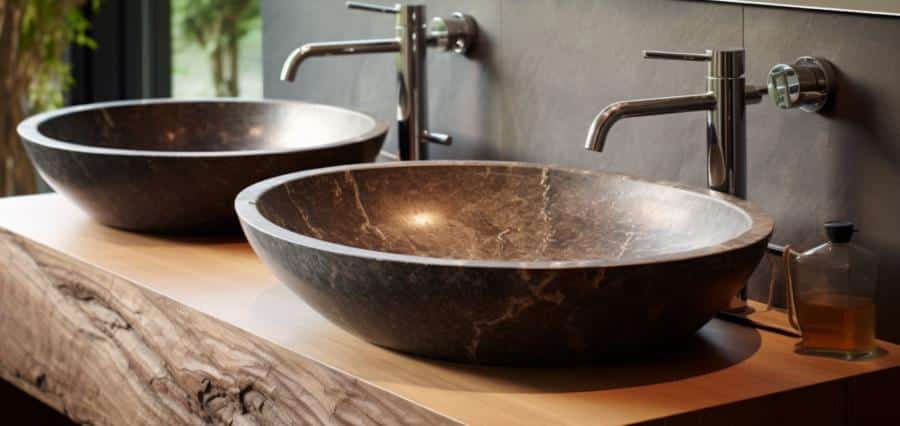Top 10 Tips on Bathroom Renovation
Bathroom renovations can be both exciting and daunting. Whether you’re upgrading a small half-bath or completely overhauling your master suite, there are several key factors to consider to ensure a smooth process and a stunning result. Below, we’ll dive into the top 9 tips for a successful bathroom renovation.
1. Set a Clear Budget
One of the first steps in any renovation project is setting a clear and realistic budget. Your budget will dictate the scope of your renovation, the materials you can afford, and the professionals you can hire. It’s easy to get carried away with luxurious fixtures and finishes, but it’s important to balance your desires with your financial reality.
Start by deciding how much you’re willing to spend and then break down the costs into categories such as plumbing, fixtures, labor, and materials. Remember to include a contingency fund for unexpected expenses—aim for about 10-15% of your total budget. This will help ensure that you don’t run out of funds halfway through the project.
2. Plan the Layout Carefully

A functional layout is the cornerstone of any good bathroom design. Whether you’re working with a small powder room or a large master bath, it’s important to plan a layout that maximizes space and usability. Consider the placement of key fixtures like the toilet, sink, and shower, and make sure there’s enough room for movement.
Avoid common layout mistakes such as placing the toilet too close to the door or having insufficient space around the sink. If your current layout doesn’t work, consider consulting a professional designer who can help you optimize the space.
3. Focus on Ventilation
Bathrooms are naturally prone to moisture, which can lead to mold, mildew, and other issues if not properly ventilated. Good ventilation is essential for maintaining a healthy bathroom environment. Depending on your bathroom’s size and layout, you may need a combination of windows, exhaust fans, and vents to ensure adequate airflow.
When choosing an exhaust fan, look for one that’s powerful enough to handle the size of your bathroom. Many modern fans come with additional features like humidity sensors and timers, which can further improve your bathroom’s air quality.
4. Choose Durable Materials
Bathrooms endure a lot of wear and tear, so it’s important to choose materials that can withstand moisture, heat, and frequent use. For flooring, consider options like ceramic tile, porcelain, or luxury vinyl, all of which are water-resistant and easy to clean. For walls, moisture-resistant drywall or cement board is a good choice.
When considering additional protective materials, it’s important to note that sealants can help extend the life of your bathroom surfaces. Sabre sealants for interior and exterior applications from NZ are perfect for both indoor and outdoor use, providing strong durability as they resist UV light, chemicals, and weathering.
Such sealants and bonding materials can provide solid protection in bathrooms, where moisture and humidity are ongoing concerns. Sealing joints and edges properly will help keep your bathroom water-tight, protecting the materials you’ve chosen.
5. Lighting Matters
Lighting plays a crucial role in setting the mood and functionality of your bathroom. A well-lit bathroom not only looks better but is also safer and more practical. The key to effective bathroom lighting is layering—use a combination of ambient, task, and accent lighting to create a balanced and inviting space.
Start with overhead lighting to illuminate the entire room, then add task lighting around the vanity for grooming and makeup application. Finally, consider adding accent lighting, such as wall sconces or under-cabinet lights, to highlight architectural features or create a relaxing atmosphere.
6. Maximize Storage
No matter the size of your bathroom, storage is always a challenge. From toiletries to towels, there are plenty of items that need a home in your bathroom. To maximize storage, think creatively—consider built-in shelves, recessed niches, and over-the-toilet cabinets.
In small bathrooms, use vertical space to your advantage. Install tall cabinets or shelving units to keep essentials organized and out of the way. Don’t forget about hidden storage options like vanity drawers with built-in organizers or medicine cabinets with mirrored doors.
7. Think About Water Efficiency
Water efficiency is not only good for the environment, but it can also save you money on your utility bills. When renovating your bathroom, consider installing water-saving fixtures like low-flow toilets, faucets, and showerheads. These fixtures are designed to use less water without sacrificing performance.
Look for products with the WaterSense label, which indicates that they meet the EPA’s criteria for water efficiency. Additionally, consider incorporating a dual-flush toilet, which gives you the option to use less water for liquid waste and more for solid waste.
8. Hire the Right Professionals

Even the most enthusiastic DIYer should recognize when it’s time to call in the professionals. A bathroom renovation involves multiple trades, including plumbing, electrical work, and tiling, all of which require specialized skills and knowledge.
When hiring contractors, be sure to do your research. Look for licensed and insured professionals with good references. Don’t be afraid to ask for a portfolio of their work or to speak with previous clients. Remember, hiring the right team can make the difference between a smooth renovation and a stressful one.
Rent a Portable Shower Unit
Renovating a bathroom can be disruptive, especially if it’s the only one in your home. One way to make the process more comfortable is by renting a portable shower unit. These units can be set up in your yard or garage, allowing you to maintain your daily routine without the inconvenience of being without a shower.
Portable shower units are easy to rent and come in various sizes to fit your needs. They typically include hot water and privacy features, making them a practical solution during renovations. This small investment can greatly reduce the stress and discomfort of a bathroom renovation.







